Inner Nature: Invertebrate mouths
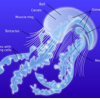
By Vidya Rajan, Columnist, The Times
I have always been fascinated by mouths and the teeth and tongues that lie inside them. Mouths are both structurally amazing and functionally diverse. We eat with our mouths, use it to communicate with sounds, express emotions, and also with breathing functions. Mouths contain tongues, one of the softest, strongest, and most sensitive muscles in our body, but they...
Inner Nature: Gender and Stereotypes
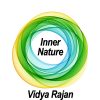
By Vidya Rajan, Columnist, The Times
Human behavior is not completely governed by biological sex. People experience a remarkable natural degree of behavioral freedom which, however, is held in check by the expectations of society. Without comparable societal structures, to what degree do other animal species experience sex-based roles? Are sex-based roles in nature invariable, interchangeable, or nonexistent?
To...
Inner Nature: Feats of strength

By Vidya Rajan, Columnist, The Times
As the weather warms, we watch bees collecting and hauling fat baskets of pollen back to their hives. Bumblebees, with their improbably large bodies hover on whirring, buzzing wings that seem barely adequate to the purpose of elevating, never mind transporting their bulk. Ants swarm kitchen counters and picnics and carry away remarkably large portions of bounty...
Inner Nature: Sodium and Potassium — The Yin and the Yang
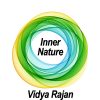
By Vidya Rajan, Columnist, The Times
In previous articles, I have examined the various roles that oxygen and iron play in living organisms. These elements are linked in an energy-cycling relationship – iron moves oxygen and electrons around the body, as well as around the inside of the cell itself to harvest energy from food [1]. In this article, I will examine another dynamic relationship: that...
Inner Nature — Fe: An Iron Constitution

By Vidya Rajan, Columnist, The Times
There are 92 naturally occurring elements in the periodic table, but only a handful of elements are essential to life. They include hydrogen, oxygen, carbon, and nitrogen in large quantities, moderate amounts of iron, magnesium, sodium, potassium, phosphorus and sulfur, and miniscule quantities of “micronutrients” like selenium and zinc. Why? In an intermittent...
Inner Nature: Chocolate — food or poison?

By Vidja Rajan, Columnist, The Times
Easter, with its egg hunts and chocolate eggs, is past. With the current school closures and social distancing, the kids are bouncing off the walls already, and don’t need any further stimulation. It’s time to get rid of the chocolate. But the reliable excess food disposal unit, aka Man’s Best Friend, is forbidden from gormandizing Godivas.
Why so?
In this...
Inner Nature: COVID-19 and what you need to know

By Vidya Rajan, Columnist, The Times
News of the novel coronavirus outbreak has exposed our vulnerability to two things: fear and contagion. I have had conversations with people, admittedly not science-aware types, who think that countries should be providing antibiotics prophylactically, or frustrated a vaccine is taking so long to make. I have heard people conflating the virus that causes COVID-19,...
Inner Nature: Gender — sex made visible

By Vidya Rajan, Columnist, The Times
Charles Darwin concluded his seminal “Origin of Species by Means of Natural Selection” with this immortal paragraph: “Thus, from the war of nature, from famine and death, the most exalted object which we are capable of conceiving, namely, the production of the higher animals, directly follows. There is grandeur in this view of life, with its several powers,...
InnerNature: Sex — The key to diversity
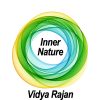
By Vidya Rajan, Columnist, The Times
In his book “Evolution: The Triumph of an Idea,” Carl Zimmer concedes: “Sex is not only unnecessary, but it ought to be a recipe for evolutionary disaster. For one thing, it is an inefficient way to reproduce…And sex carries other costs as well…By all rights, any group of animals that evolves sexual reproduction should be promptly outcompeted by nonsexual...
Inner Nature: Animal Development: Evolution of Body Plans
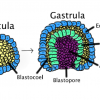
By Vidya Rajan, Columnist, The Times
To observe a graceful animal in motion is a beautiful thing.
This is even more so for those justly celebrated for their mastery of movement, such as a hummingbird hovering over a flower, or a human thundering to a heart-stopping sub-10 second 100 meter Olympic run. The seeming perfection of form is an illusion – all forms are in development, with each generation...




